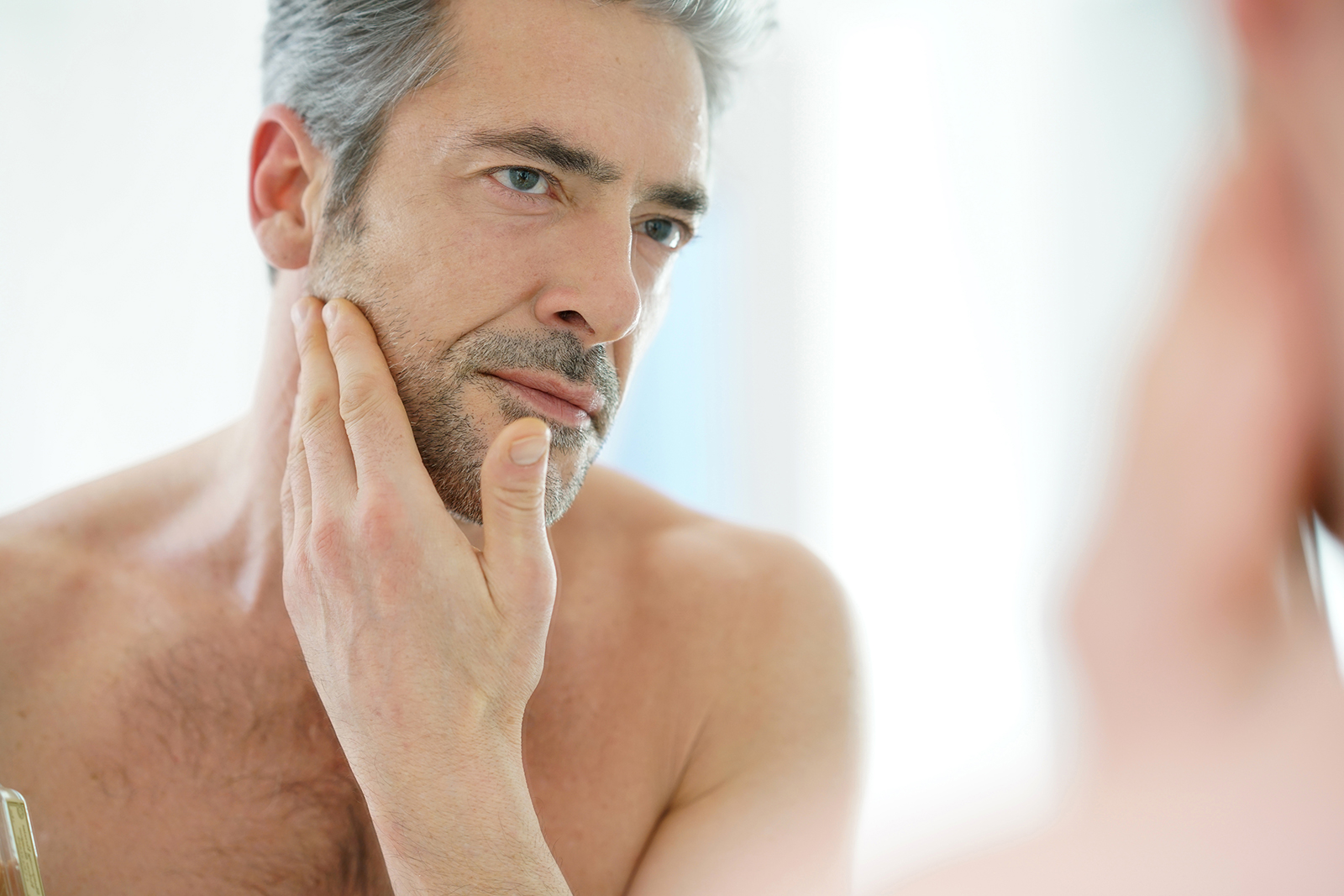Detecting Actinic Keratosis, also known as solar keratosis, during the early stages, can allow you to treat the lesion and help prevent skin cancer developing. If Actinic Keratosis (AK) is detected during its initial stages, you can successfully remove almost all the lesions.
In this guide, we answer the most common questions relating to AK, from what it is to the best treatments available.
What is Actinic Keratosis?
Actinic Keratosis are rough, scaly and dry patches on the skin that have developed from years of overexposure to ultraviolet rays – be it from the sun or artificial lights.
The patches of skin are not usually serious, but there is a small chance they could become skin cancer, so it is important to avoid further damage to your skin once you notice AK forming.
Who does it affect?
Anyone can get Actinic Keratosis (AK), but you may be more likely to get it if you have the following attributes:
- Over 40 years old.
- Have red or blonde hair, and blue or light-coloured eyes.
- In fact, studies show that you are seven times more likely to get it if you have red hair.
- Burn easily when exposed to sunlight.
- Live in sunny places or frequently use (or have used) tanning beds.
- Have a weak immune system because of cancer treatment, AIDS or organ transplant medication
- It is possible to develop AK from thiazide diuretics and other cardiac drugs. However, the risks associated with these treatments need to be further explored.
How to spot Actinic Keratosis
There are four ways to spot AK:
- Your skin is flat to slightly raised, scaly, crust, rough, and sometimes has a raised horn shape or bump.
- It is red, dark brown, pink, skin-coloured or silvery.
- The lesion’s dimensions can vary from a tiny spot to as much as an inch in diameter.
- The areas AK is most likely to appear are parts of your body that have frequently been exposed to ultraviolet (UV) rays, including the face, lips, ears, scalp, shoulders, neck, back of the hands and forearms.
AK is more easily felt than seen. The skin may feel dry and rough to the touch, raw, sensitive or even painful. It can also feel itchy with a burning sensation. In rare instances, they may bleed or develop ulceration.
Can Actinic Keratosis turn into cancer?
While AK may give rise to skin cancers like squamous cell carcinoma, only 5-10% of AK turns into cancer. AKs do not turn into the more dangerous skin cancer melanomas.
However, it is important to keep in mind that those who have AKs may be more likely to develop melanoma as they have been exposed to more UV light. Additionally, those who have AK are more likely to develop other types of cancer compared to their counterparts who do not have it the same age.
Is Actinic Keratosis contagious?
No, Actinic Keratosis cannot be passed onto anyone else.
Does Actinic Keratosis go away by itself?
Sometimes, small patches of Actinic Keratosis (AK) can go away, but most will remain. If you spot any of the signs of AK, you should talk to your dermatologist or healthcare provider before deciding what the best course of action is.
What is the best treatment for Actinic Keratosis?
There are several treatment options available for Actinic Keratosis (AK); no one treatment is better than the other. It all depends on what is best for the individual.
Treatments used for AK include the following:
- Freezing with liquid nitrogen
- Surgical removal
- Creams
- Laser treatment
- Photodynamic therapy; via artificial light or natural daylight
Natural daylight Photodynamic Therapy and SmartPDT
Natural daylight photodynamic therapy (daylight-PDT) is a simple, non-invasive procedure which can be used to treat Actinic Keratosis (AK). It involves applying a cream to the affected area of skin that is activated by natural daylight. Once activated, the cream destroys abnormal cells, without affecting the healthy tissue.
The main drawback to daylight-PDT is that it relies on the weather. You need to have a certain amount of sunlight for the treatment to work. Our SmartPDT solution gives patients the freedom to organise the timing of their treatment, easily rearrange it if the weather is bad, and all from the comfort of their own home. For healthcare providers and dermatologists, it gives them the ability to monitor the treatment remotely and adjust where necessary depending on how well it is going, without the need for patients to visit the hospital.
You can find out more about our SmartPDT solution here.
What can I do to reduce the likelihood of getting Actinic Keratosis?
If you have Actinic Keratosis (AK) or are in the demographics that are more likely to get it, there are several things you can do to avoid any further sun damage you may already have. This will help reduce the likelihood of getting AK, of it spreading further and can lower your chances of skin cancer.
? Apply sunscreen with an SPF factor of at least 30 before you go out into the sun and reapply regularly. Help make sure you get the right sun protection for your skin with help from our Sun4Health app. Ask your healthcare provider for more information about it.
? Wear a hat and clothing that covers your legs and arms when you are out in the sun
x Avoid sunbeds, and artificial UV lamps as these can cause long-term skin damage and affect treatments
x Stay out of peak sun times. Do not go out in the sun between 11 am – 3 pm as this is when the sun is at its strongest. If you can’t avoid it, be sure to stay in shaded areas.
If you suspect that you have actinic keratosis, we recommend that you talk to your healthcare provider or dermatologist as soon as possible.


